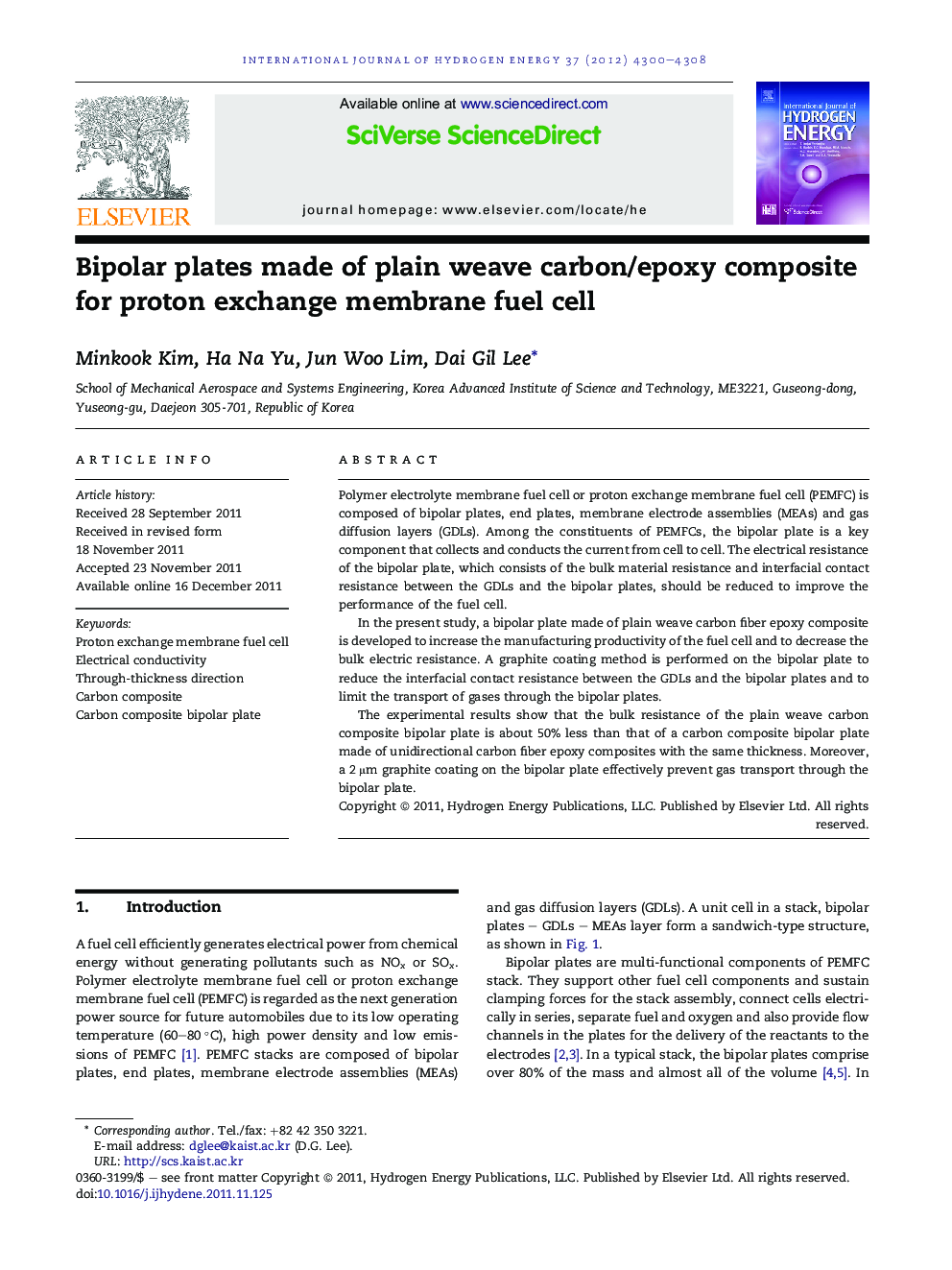| Article ID | Journal | Published Year | Pages | File Type |
|---|---|---|---|---|
| 1275486 | International Journal of Hydrogen Energy | 2012 | 9 Pages |
Polymer electrolyte membrane fuel cell or proton exchange membrane fuel cell (PEMFC) is composed of bipolar plates, end plates, membrane electrode assemblies (MEAs) and gas diffusion layers (GDLs). Among the constituents of PEMFCs, the bipolar plate is a key component that collects and conducts the current from cell to cell. The electrical resistance of the bipolar plate, which consists of the bulk material resistance and interfacial contact resistance between the GDLs and the bipolar plates, should be reduced to improve the performance of the fuel cell.In the present study, a bipolar plate made of plain weave carbon fiber epoxy composite is developed to increase the manufacturing productivity of the fuel cell and to decrease the bulk electric resistance. A graphite coating method is performed on the bipolar plate to reduce the interfacial contact resistance between the GDLs and the bipolar plates and to limit the transport of gases through the bipolar plates.The experimental results show that the bulk resistance of the plain weave carbon composite bipolar plate is about 50% less than that of a carbon composite bipolar plate made of unidirectional carbon fiber epoxy composites with the same thickness. Moreover, a 2 μm graphite coating on the bipolar plate effectively prevent gas transport through the bipolar plate.
► Plain weave carbon composite bipolar plate with low resistance is developed. ► Plain weave carbon composite reduces bulk resistance in through-thickness direction. ► A graphite coating on the surface of the bipolar plate reduces contact resistance. ► The graphite coating limits the transport of gases through the bipolar plates. ► The flexural strength of the bipolar plate is higher than the DOE garget value.
